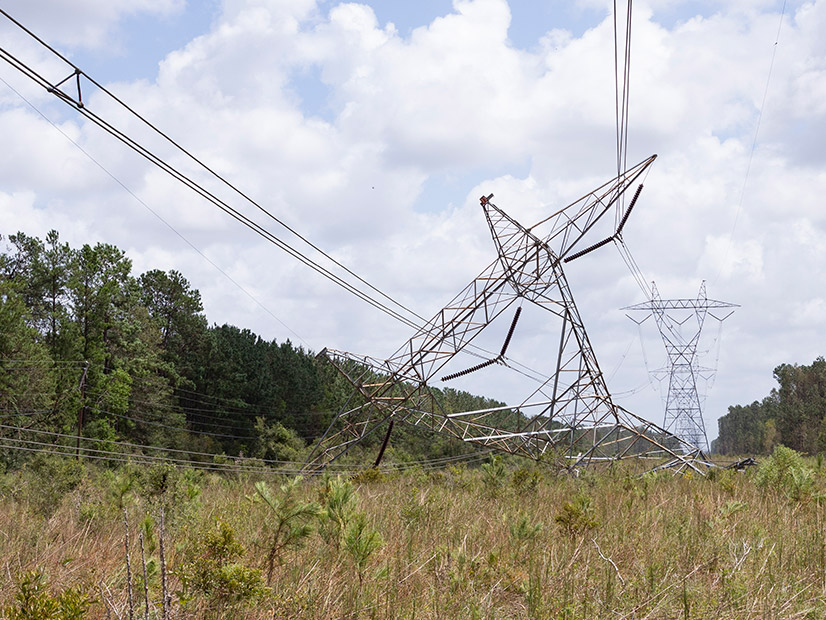In what has become a familiar refrain, MISO said it could get into hot water this summer if demand spikes and generation trips offline.
The grid operator says it has 146 GW of total capacity to cover a projected summer peak of 122 GW. However, staff told stakeholders during a May 4 summer readiness workshop that emergency declarations could be made in all three months.
Eric Rodriguez, a resource adequacy engineer, said that if the summer peak is realized in July under expected load and generation availability conditions, MISO may be forced to call an emergency to access its fleet of load-modifying resources. If faced with worst-case generation outages and demand hits 129 GW, the RTO runs the risk of exhausting all its emergency reserves. MISO set its all-time summer peak of 127 GW in July 2011.
Rodriguez said generation outages could become a concern. Last summer, outages during the monthly peak hours were high compared to MISO’s five-year average of outages during peak summer months. During last June’s peak hours, planned and forced outages exceeded 25 GW.
This year’s forecasted peak is lower than MISO’s 2020 projection of 125 GW. The grid operator had 152 GW of available capacity, but despite two weather-related emergency declarations, the summer peak came in at just 117 GW in late August. (See MISO Preps for Balmy Summer with Pandemic Effects.)
Renuka Chatterjee, executive director of system operations, said in a release that staff’s projections were made “based on information we received from our members and stakeholders.” She said MISO will work with members “to ensure operational readiness regardless of the conditions, season or time of day.”
The National Oceanic and Atmospheric Administration anticipates warmer-than-average temperatures throughout the RTO’s footprint this year.
Staff reflected on last summer’s slew of challenges.
“Not only did we manage operations in a pandemic … MISO also went through its first experience with a major hurricane,” MISO Director of Operations Planning J.T. Smith said.
Trevor Hines, manager of South reliability, said last summer featured a July transmission outage in Michigan, a powerful derecho in Iowa and the Midwest in August and Hurricane Laura’s devastation in the Gulf in August.
He said intensifying storms call for “more robust preparation” and “more sophisticated tactical annual hurricane drills.”
Hurricane Hazards
MISO is expecting an above-normal hurricane season this year, said Anita Hurst, of MISO’s training division.
Using predictions from Colorado State University, she said the 2021 Atlantic hurricane season could result in 17 storms, eight of which would develop into hurricanes. Of those eight, four would likely develop into major hurricanes. CSU also predicted a 44% chance that a hurricane would brew in the Gulf of Mexico before striking the U.S.
Hurst said last year, the COVID-19 pandemic forced MISO to scale back its annual hurricane drills with members. “This year, we are back in full force, leveraging our simulator,” she said.
Cooperative Energy Director of System Operations Joe Riels stressed the importance of emergency preparation to his fellow stakeholders.
“Everybody has a plan until they get punched in the mouth,” Riels said, quoting former boxer Mike Tyson. He said Cooperative Energy had such a moment when MISO ordered the co-op to shed load during February’s ice storm.
“Admittedly, it took a few seconds until we got our plan together,” Riels said.
SERC Vice President of Operations Tim Ponseti said that the 11 hurricanes that made landfall in the U.S. during the 2020 season smashed the all-time record set 1916.
“It becomes a patriotic event in this country, all the people pooling together to restore power,” he said.
During the Gulf Coast Power Association’s spring conference last week, CenterPoint Energy Executive Vice President Kenny Mercado remarked on the more frequent, stronger storms.
“We don’t see [Category] 1s and 2s anymore. We see 4s and 5s,” Mercado said during an April 29 panel.
Entergy Texas CEO Sallie Rainer said Entergy has been building more wind-resistant transmission towers in the Lake Charles, La. area, which found itself in the path of two major hurricanes in 2020.




